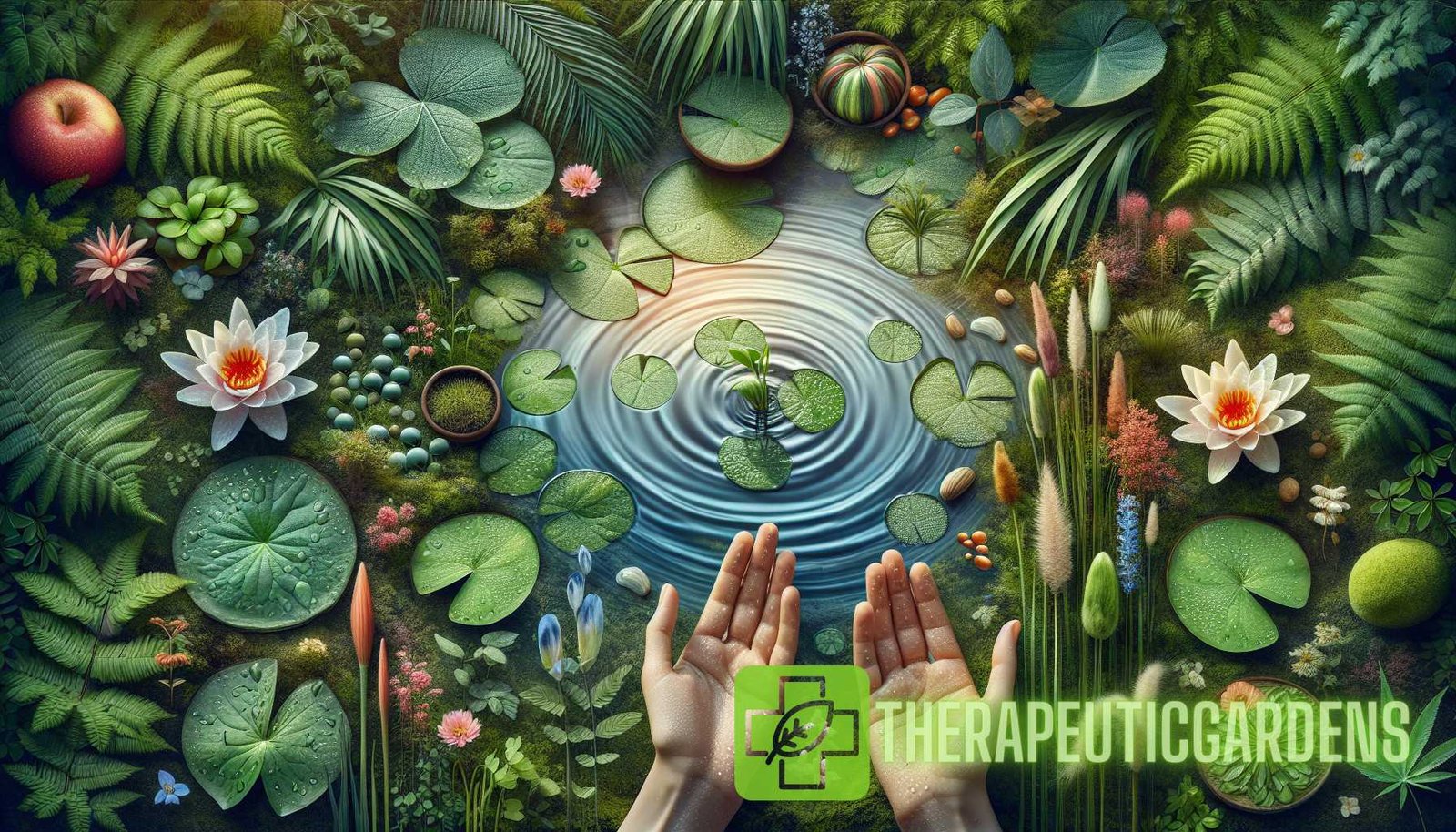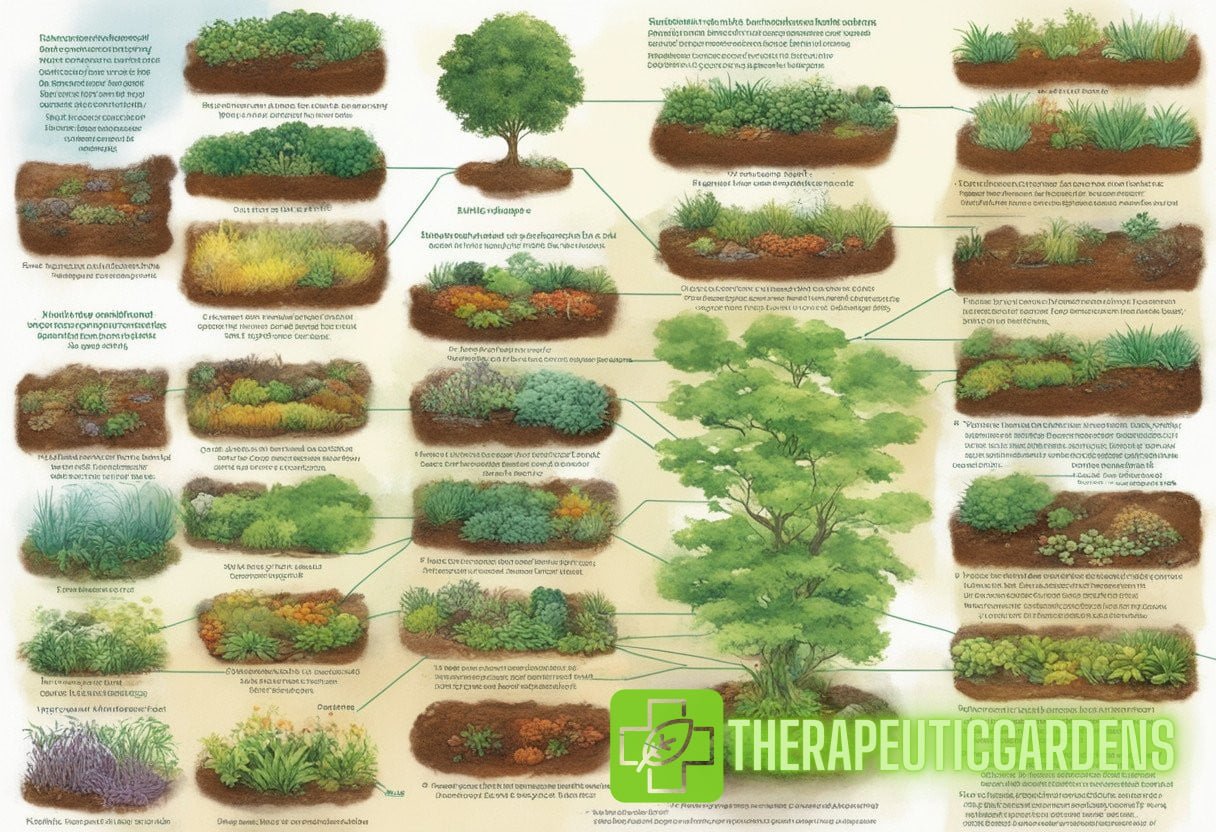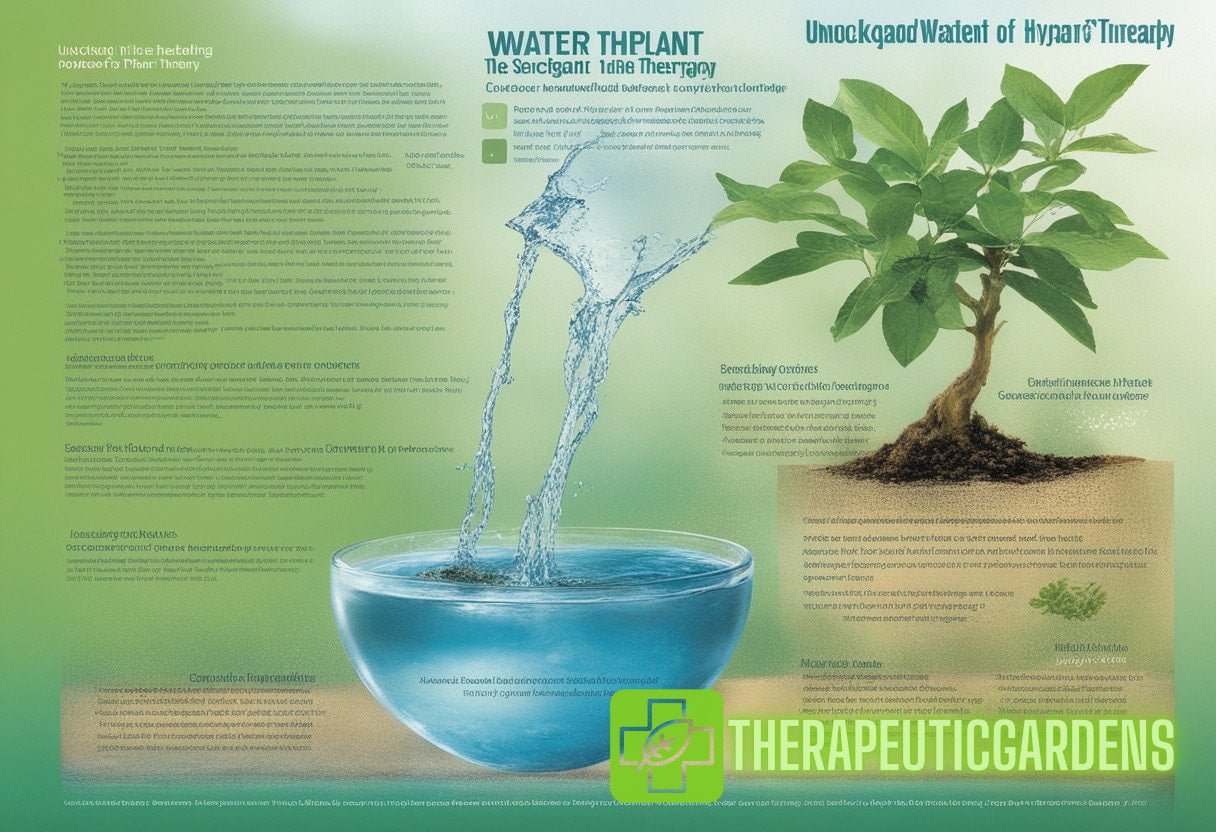Introduction
Water therapy and therapeutic plants have been used for centuries to promote health, well-being, and healing. These natural modalities harness the power of water and the therapeutic properties of various plants to treat a wide range of physical and mental conditions. In this article, we will uncover the harmonic power that water therapy and therapeutic plants hold and explore their incredible healing properties. We will delve into the different ways in which water therapy and therapeutic plants can be used, their benefits, and how they can be integrated into our daily lives to enhance our overall well-being.
What is Water Therapy?
Water therapy, also known as hydrotherapy, is the use of water in various forms to promote healing and improve overall health. This age-old practice has been utilized by various ancient civilizations, including the Egyptians, Greeks, and Romans, who discovered the remarkable benefits of water for restoring and maintaining health. Water therapy can take many forms, including hot and cold water treatments, steam baths, saunas, and mineral baths. These therapeutic activities can be performed in spas, wellness centers, or even in the comfort of your own home.
The healing power of water therapy lies in its ability to stimulate blood circulation, relax tense muscles, detoxify the body, and reduce inflammation. By immersing ourselves in water or applying it directly to our bodies, we can tap into these benefits and experience a profound sense of rejuvenation and healing. Water therapy is particularly effective in relieving pain, reducing stress, and promoting better sleep. It can also be used as a complementary treatment for various chronic conditions, such as arthritis, fibromyalgia, and respiratory disorders.
To incorporate water therapy into your routine, consider visiting a local spa or wellness center that offers hydrotherapy treatments. Alternatively, you can create your own water therapy oasis at home by installing a hot tub, steam shower, or sauna. These investments can provide you with long-term access to the therapeutic benefits of water and allow you to personalize your wellness routine according to your preferences and needs.
The Power of Therapeutic Plants
Therapeutic plants, also known as medicinal plants or herbs, have been used throughout history for their remarkable healing properties. These plants contain bioactive compounds, such as alkaloids, flavonoids, and essential oils, which possess therapeutic effects on the human body. The use of therapeutic plants can be traced back to ancient civilizations, where they were used for medicinal, culinary, and spiritual purposes. Today, therapeutic plants continue to play a vital role in natural medicine and are widely recognized for their diverse health benefits.
Therapeutic plants can be consumed in various forms, including herbal teas, tinctures, essential oils, and dietary supplements. They can also be applied topically as ointments, creams, or oils. The specific method of consumption depends on the plant and its intended use. For example, chamomile tea can be consumed to promote relaxation and improve sleep, while lavender essential oil can be applied topically to relieve stress and anxiety.
The healing power of therapeutic plants lies in their unique chemical compositions. Each plant contains a distinct combination of bioactive compounds that contribute to its therapeutic effects. For example, ginger contains gingerol, a compound that has potent anti-inflammatory and anti-nausea properties. Turmeric contains curcumin, a powerful antioxidant and anti-inflammatory compound. By harnessing the power of these plants, we can support our body’s natural healing processes and improve our overall well-being.
Water Therapy and Therapeutic Plants: A Harmonious Pairing
When water therapy and therapeutic plants are combined, their healing powers are amplified, creating a harmonious and transformative experience. The use of therapeutic plants in water therapy can enhance the therapeutic effects of both modalities and provide additional benefits for the mind, body, and soul. Below, we explore some of the ways in which water therapy and therapeutic plants can be integrated for optimal healing.
1. Herbal Baths
One of the most popular ways to combine water therapy and therapeutic plants is through herbal baths. Herbal baths involve infusing bathwater with various therapeutic herbs to create a soothing and therapeutic experience. The warm water helps to relax the body and open the pores, allowing the bioactive compounds from the herbs to be absorbed more effectively.
To prepare an herbal bath, simply fill your bathtub with warm water and add a handful of dried herbs, such as lavender, chamomile, or rosemary. Allow the herbs to steep in the water for a few minutes before immersing yourself in the bath. As you soak in the herbal-infused water, breathe deeply and allow the healing properties of the herbs to penetrate your skin and relax your mind. Herbal baths can help alleviate stress, promote relaxation, and soothe muscle aches and pains.
For a more immersive herbal bath experience, you can create a therapeutic garden in your backyard or balcony. This way, you can cultivate your own healing herbs and use them fresh in your herbal baths. Many therapeutic plants are easy to grow and require minimal maintenance. Consider planting lavender, chamomile, and mint, as these herbs are known for their calming and soothing properties.
2. Aromatherapy Showers
Aromatherapy showers combine the relaxing power of water with the therapeutic benefits of essential oils. This form of water therapy involves adding a few drops of essential oil to the shower floor or using a diffuser to create a fragrant steam in the shower stall. As you shower, the warm water activates the essential oils, releasing their aromatic molecules into the air.
To create an aromatherapy shower, simply add a few drops of your favorite essential oil, such as eucalyptus, lavender, or peppermint, to the floor of your shower before stepping in. Alternatively, you can use a diffuser that attaches to your showerhead to disperse the essential oil-infused steam. As the warm water cascades over your body, inhale deeply and allow the therapeutic aroma to envelop you. Aromatherapy showers can help to uplift your mood, clear your sinuses, and promote a sense of calm and well-being.
To enhance the therapeutic effects of your aromatherapy shower, consider incorporating therapeutic plants into your bathroom decor. Place potted plants, such as aloe vera or snake plants, on the bathroom countertop or window sill to improve air quality and create a serene environment. These plants not only add a touch of greenery to your space but also release oxygen and purify the air, enhancing the overall therapeutic experience.
3. Hydrotherapy Gardens
Another way to combine the healing power of water therapy and therapeutic plants is through hydrotherapy gardens. Hydrotherapy gardens are specially designed outdoor spaces that incorporate water features, such as fountains, ponds, or waterfalls, with therapeutic plants that provide additional health benefits. These gardens create a tranquil and rejuvenating environment where visitors can immerse themselves in nature while experiencing the therapeutic effects of water and plants.
To create a hydrotherapy garden, start by selecting a variety of therapeutic plants that thrive in your climate. Consider plants such as rosemary, sage, or lemon balm, which release fragrant oils when brushed against or crushed. These plants can be strategically placed near water features, so the aroma is carried by the breeze, enveloping the garden with a pleasant scent. Additionally, you can incorporate seating areas or walking paths that allow visitors to immerse their feet in shallow pools or fountains for a soothing foot bath.
The healing symphony of water and therapeutic plants in a hydrotherapy garden can provide a range of physical and mental health benefits. Spending time in nature has been shown to reduce stress, boost mood, and improve overall well-being. Combining the therapeutic effects of water with the healing properties of plants creates a space that promotes relaxation, healing, and inner harmony.
The Benefits of Water Therapy and Therapeutic Plants
The integration of water therapy and therapeutic plants offers numerous benefits for our physical, mental, and emotional well-being. By harnessing the power of water and plants, we can enhance our overall health and optimize our body’s natural healing processes. Here are some of the benefits that water therapy and therapeutic plants provide:

1. Stress Reduction
- Water therapy and therapeutic plants have a calming effect on the nervous system, helping to reduce stress and anxiety.
- The sound of water trickling or the fragrance of therapeutic plants can create a soothing environment that promotes relaxation and mental clarity.
- Research has shown that spending time in nature has a positive impact on stress levels and can help to lower cortisol, the stress hormone.
2. Improved Sleep
- Water therapy, such as taking a warm bath or shower, can relax the body and prepare it for a restful night’s sleep.
- Therapeutic plants, such as lavender or chamomile, have sedative properties that can promote a deeper and more restorative sleep.
- Aromatherapy showers and herbal baths create a calming atmosphere that encourages relaxation and a peaceful sleep.
3. Pain Relief
- Water therapy, particularly warm water treatments, can help to relieve muscle soreness, joint pain, and inflammation.
- Therapeutic plants, such as ginger or turmeric, have anti-inflammatory and analgesic properties that can reduce pain and promote healing.
- Herbal baths and aromatherapy showers can provide localized pain relief and promote overall relaxation and well-being.
4. Enhanced Immune Function
- The combination of water therapy and therapeutic plants can support immune function by reducing stress, promoting relaxation, and improving sleep.
- Many therapeutic plants, such as echinacea or elderberry, have immune-boosting properties that can help protect against common illnesses.
- Water therapy, such as cold water treatments or hydrotherapy, can stimulate blood circulation and improve lymphatic flow, which supports the immune system.
5. Mental Clarity and Focus
- Water therapy can invigorate the body and mind, improving mental clarity and focus.
- Therapeutic plants, such as rosemary or peppermint, have stimulating properties that can improve cognitive function and enhance memory.
- The combination of water therapy and therapeutic plants can create a harmonious environment that encourages mental clarity and concentration.
6. Respiratory Health
- Water therapy, such as steam baths or inhaling steam, can help to clear congestion and improve respiratory function.
- Therapeutic plants, such as eucalyptus or peppermint, have decongestant and expectorant properties that can alleviate respiratory symptoms.
- Aromatherapy showers and herbal baths can open up the airways and provide relief from allergies, colds, and respiratory infections.
Conclusion
Water therapy and therapeutic plants are powerful natural modalities that have been used for centuries to promote healing and enhance overall well-being. Water therapy harnesses the healing properties of water to relax the body, promote circulation, reduce inflammation, and alleviate pain. Therapeutic plants, on the other hand, contain bioactive compounds that possess unique therapeutic properties, such as reducing stress, improving sleep, and boosting immune function. When combined, water therapy and therapeutic plants create a harmonious symphony of healing that can provide numerous benefits for our physical, mental, and emotional health.
By incorporating water therapy and therapeutic plants into our daily lives, we can optimize our body’s natural healing processes and create a sanctuary of relaxation and rejuvenation. Whether it’s taking an herbal bath, enjoying an aromatherapy shower, or creating a hydrotherapy garden, there are endless ways to integrate water therapy and therapeutic plants into our routines. Embrace the power of water therapy and therapeutic plants and unlock their harmonious healing potential.
Sources:
Internal Links:
- An article available at therapeauticgardens.store that explores the health benefits of plant therapy.
- Discover the top healing herbs for your own therapeutic garden.


